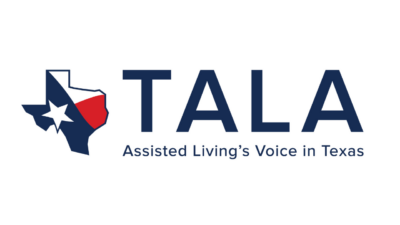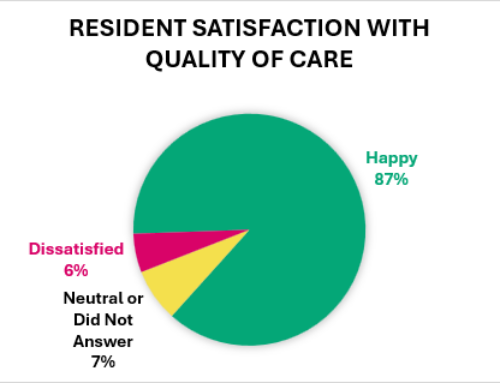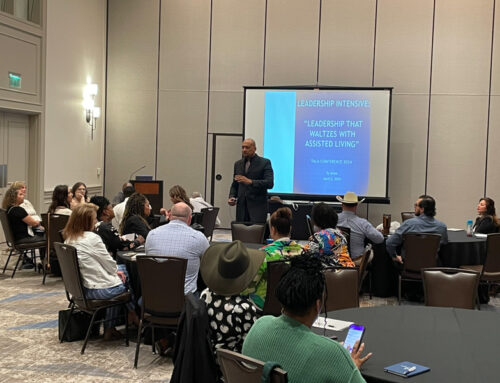This article is the fifth of a five-part series Become a Great Senior Living Leader by the TALA Workforce Development Committee.
Leading with transparency has multiple benefits to an organization and its people. Transparency is often thought to refer to something that is permeable or see though. When it comes to leadership, transparency refers more to integrity, being open and honest. While it is understood that not every aspect of a business can be shared in its totality (i.e. we don’t share our entire profit and loss statement or internal quality assurance documents with the public) but leading with a sense transparency can have profound positive impacts on the organization, its people, and its customers.
What Are the Benefits of Leading with Transparency?
Leading with transparency can be applied to different aspects of leadership, but the result builds trust and confidence across the board: with staff, managers, shareholders, as well as customers. When information is shared (appropriately) with others, then it allows them to have a sense of security and, in turn, buy in.
There are different ways that transparency can be utilized in leadership:
- With data or information
- With oneself
- With the customer
Using transparency when sharing data or information:
Does your team understand the metrics they are held accountable to? It can be difficult to understand what is appropriate to share and with whom in an organization. After all, not every employee needs a full understanding or detailed analysis of the financial performance of the community. Obviously, full transparency in this case can easily backfire – for example, there is a reason that employee wages are accessible to only a few key individuals. However, sometimes leaders have held their data/information too close to the vest, so to speak. At the very least, employees need to understand what is expected of them. The easiest example is budgeting data: do your department managers understand what their budgeted spend and or labor hour allocations are?
In addition, sharing data openly can have a positive and profound team building effect. Sharing a key metric with the entire team can help garner a sense of buy in from all departments. For example, if falls have been a clinical challenge for your community, openly sharing what the fall numbers are, how they are trending, and a goal to decrease can help the front-line caregivers, as well as other supports such as housekeeping, have a sense of ownership. If a housekeeper knows this is an area of improvement and they notice a resident’s walker is placed too far away from the chair while they are cleaning an apartment, they can move it closer to the resident.
Does your team understand the key metrics the business is focusing on? is not unusual for the leadership team to understand what key performance metrics they are striving toward, but often the front-line team is left out. To have a fully functioning team that increases the likelihood of total engagement, why not share what your goals are and celebrate wins with the entire team.
Some examples of metrics to share with the team can include:
- Occupancy goals
- Turnover rates
- Regulatory/Survey results
- Clinical trends (falls, medication errors, wounds, incidents, etc.)
A leader personally using transparency:
When you think of an individual leader leading with transparency, it means that the individual is appropriately open and honest with their team. It also alludes to using vulnerability in their leadership style.
How does leading with vulnerability look like? Perhaps the best example is in Brene Brown’s book Dare to Lead. In it, Brown describes a leader’s truest trait as their ability and willingness to be vulnerable. This doesn’t mean that one must be constantly sharing their innermost secrets, but rather someone who allows themselves to be open to moments of true connection with their team. This can be done with the way one communicates and solves issues and challenges. While a leader’s tendency is one to feel like they need to know all the answers at once and never show weakness, the true connection with others can be enhanced through honest, and sometimes vulnerable, transparency. A leader who is committed to giving and receiving tough conversations in a humble manner can truly make an impact on their team.
Below are a few examples on how a leader could positively use transparency and vulnerability in their role:
- Be curious and ask questions with the aim of gaining an understanding of where your team is. For example, after a tough experience, check in with a team member could look like: “I noticed that after that meeting you seemed quiet. Can you tell me how that affected you?” Or “I am just checking in to see how you are doing after X.”
- Ask for feedback from peers and those who report to you. The important thing is to be committed to growth from their responses. This could be done through one-on-one conversations, or you could ask someone you trust to confidentially interview your team to ask for their feedback on your strengths and opportunities. Doing this exercise can take as little as a few minutes of conversation from each team member but can identify a wealth of information.
- What do they want you to continue doing?
- What would they like to see you do more (or less) of?
- What do they need from you?
The key to being transparent with your team is having a true genuine interest in what you learn and the commitment to address it. Don’t elicit information from individuals without a commitment to lean in and do something with it. Also, keep in mind that our natural tendency to react to tough feedback is to become defensive. Challenge yourself to step back and really take in the information you have received to assess and make any necessary changes to increase the engagement with your team.
Leading with Transparency to the Customer:
A key to leading with transparency with customers is trust. This means sharing appropriate information with the customer when there is a service issue or failure. Being appropriately open in these circumstances is crucial in building the relationship with the consumer. This means providing feedback on the event and investigation, with the most important aspect of this being in the follow-up. This (ideally timely) conversation includes what you found, what you are going to do about it, and how you are going to prevent this from happening again. Follow-up can also include scheduled or spontaneous check-ins with the family to assure them that you are still interested in how things are going and value their feedback.
Having a crisis at some point is all but guaranteed for a business, especially one that serves people. It’s well known that it is just as important in how a business or leader responds to an unwanted event as the event itself, that can determine its ability to succeed. We can see throughout history that customers appreciate timely and honest communication that doesn’t defer blame and comes with a swift remediation plan. One example of this was the Tylenol product being tampered with in the early 1980’s. Seven people died from taking Tylenol that were laced with cyanide. While it believed that the tampering likely happened on the store shelves in an isolated location, Tylenol (and parent company Johnson and Johnson) immediately pulled millions of dollars of product from the shelves, even though many believed it was an aggressive intervention that wasn’t needed. In addition, the CEO never placed blame but took responsibility for the event. Thousands of memos were sent to hospitals and clinics to warn them and marketing for the product ceased. Within a year of the event, Tylenol had regained its market share and they retained customer loyalty. Harvard University and others often use their case as an example of excelling in crisis management.
While you hopefully will never experience a national or even local crisis, lessons can be taken from other industries to model appropriately using transparency with a customer to retain loyalty.
References:
- Brown, B. 2019. Dare to Lead. Random House, New York.
- Marker, Andy. August 19, 2020. The Most Useful Crisis Management Examples, The Good, Bad and Ugly. The Best Crisis Management Examples | Smartsheet
-------------
Written by TALA Workforce Development Committee Member Samantha Jones, Legend Senior Living
This article is the fifth of a five-part series Become a Great Senior Living Leader by the TALA Workforce Development Committee.





